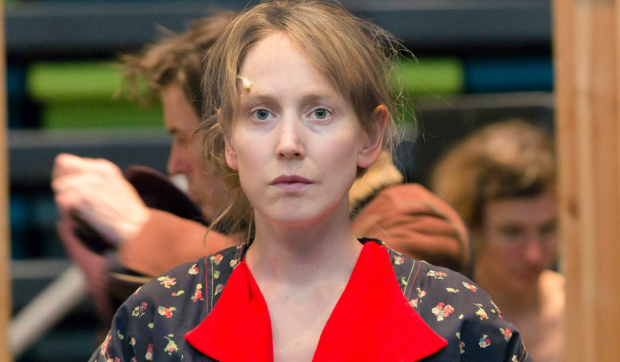Review: Anatomy of a Suicide (Royal Court)
Bleak doesn’t begin to describe the effect of Alice Birch‘s new play which explores the impact of depression and suicide across three generations of women, the malaise seeping from mother to daughter like a malignant fog.
But in Katie Mitchell‘s tightly-coiled and brilliantly acted production, the darkness is always compelling, not so much an exploration of despair as an evocation of the thing itself, its power to hold a woman in its grasp and destroy her, however much she tries to be free.
Birch, who has made her name in the theatre with the cry to arms Revolt, She Said, Revolt Again and on film with Lady Macbeth, writes plays that are almost poetry. Themes, words and sentences are repeated, in invocations that are almost ceremonial. Fish, aquariums, precious and precocious girls, loving but ineffectual men, the question ‘are you happy?’, the horror of ECT, the love of another woman, run through the text.
Even the way the words sprawl across the page, horizontally, in columns, is reflected by Mitchell’s production which sets the three women against three doors in three sections of Alex Eales’s claustrophobic set, lit low by James Farncombe and filled by a rumbling, howling, disturbing soundtrack from Paul Clark and Melanie Wilson.
The structure is simultaneously intricate and simple. We meet each of the women at a moment of crisis in a hospital. First Carol, played with fragile, frightened grace by Hattie Morahan, appears with her arms bandaged, having attempted to slash her wrists; then her daughter Anna, a terrific, terrified Kate O’Flynn, barely able to stand thanks to the grip of her addictions; finally Carol’s grand-daughter Bonnie (Adelle Leonce) who is a doctor, meeting a woman who wants to be her lover, yet seemingly paralysed from accepting even the offer of a drink. As clocks overhead keep track of the years, from 1970 to 2043, their stories unfold simultaneously but in parallel; they never cross into each other’s space.
In between each scene (some of which, despite the grim story, are punctuated by dark humour), the central trio are manipulated like mannequins, dressed for their parts by the women and men who play all the other roles in the play, given colour coded costumes – red for Carol who hears wolves howling as she brings her baby home; green for Anna; white (initially) for pristine, professional Bonnie. And the bulk of the action unfolds in the same place – the house which Carol moves to with her husband John when she is first pregnant, falling in love with the plum trees, which becomes a home and a place of haunting for the subsequent generations who must live with and make sense of the troubled past.
The tightness of this emotional shaping is both the play’s strength and its constriction. It is very powerful, but doesn’t allow for much light and shade. Leonce as Bonnie, in particular, is given very little explanation or opportunity for character development and has to convey her fears within a very narrow compass. That she does so excellently doesn’t quite justify how little we are allowed to understand her.
Other scenes cast more vivid light; the swift brushstrokes with which Carol’s illness is dismissed by doctors, relatives and even her loving husband in an era in which her role as a wife and mother is automatic rather than questioned are devastatingly effective. The idea that love in itself is not enough to help women who suffer is also beautifully conveyed.
In the end, whether you admire Anatomy of a Suicide will depend very much on your tolerance for understatement and allusion. It creates an impression and a mood far more than it offers any easy solutions. As it works its way towards its strongly affecting ending, it asks you to understand by osmosis. I find it has eaten into my thinking in a way many more conventional plays do not.
Anatomy of a Suicide runs at the Royal Court until 8 July











